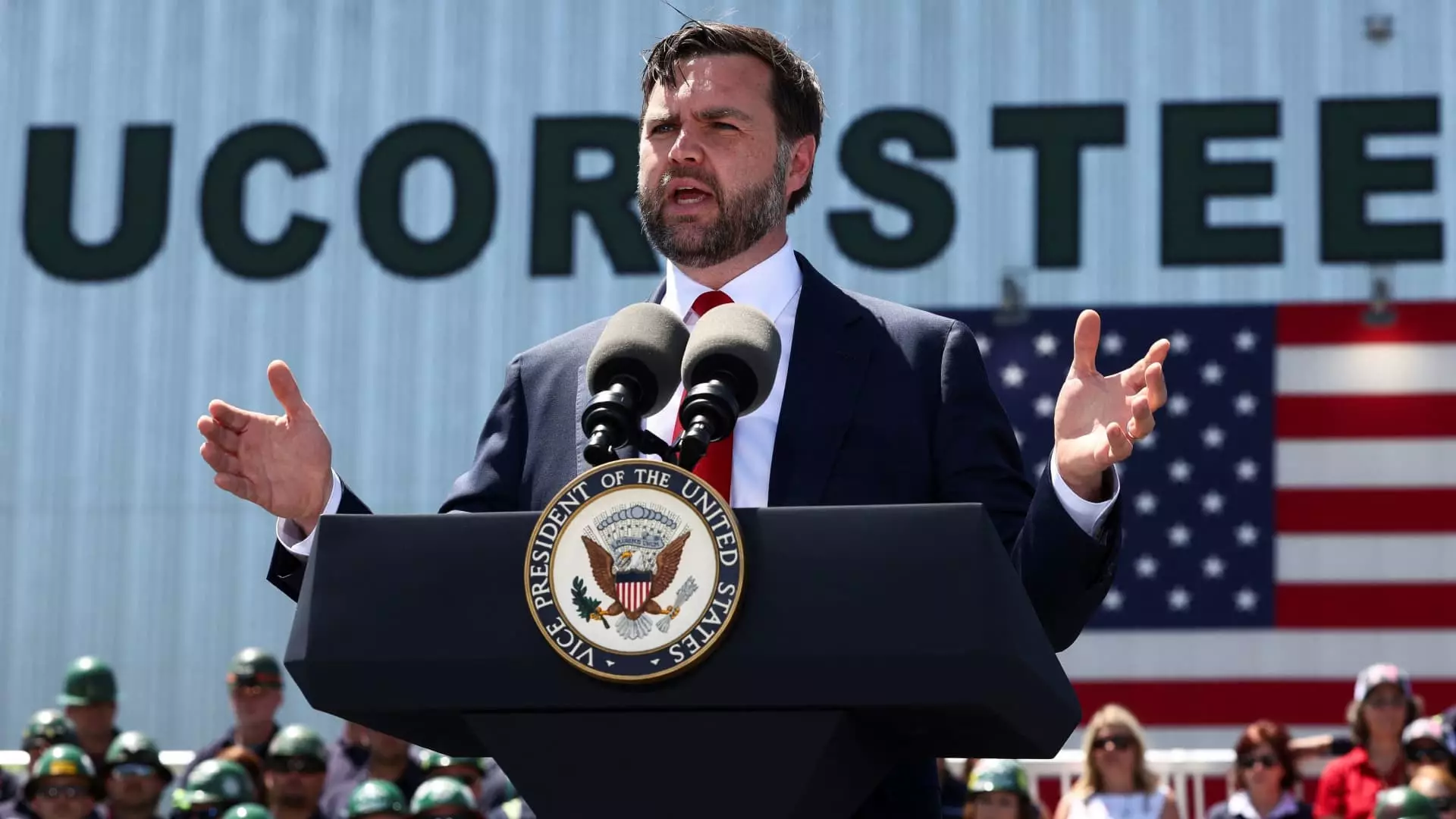As President Donald Trump and Vice President JD Vance team up in a bold bid to sway the Federal Reserve towards reducing interest rates, we should stop to consider the ramifications of such a political maneuver. Their recent pressure on the Fed comes against the backdrop of inflation metrics that have shown only a minimal uptick. The administration’s insistence on lowering rates seems less an economic strategy and more a desperate attempt to stabilize political fortunes. A mere 0.1% rise in the consumer price index may not warrant drastic fiscal action, yet here they are, framing it as a cry for relief. The narrative of “monetary malpractice,” as termed by Vance, risks trivializing the complexity of fiscal policy management.
Inflation Rates and Political Motives
Vance’s commentary follows a Bureau of Labor Statistics report that showed inflation slightly above the Federal Reserve’s 2% target. How ironic is it that an administration that has championed tariffs is now pivoting to denounce the Fed in light of limited inflationary effects from those very tariffs? It suggests a concerning disconnection between the proposals on policy and the realities of economic fundamentals. The administration’s position seems driven more by the desire to create a narrative of economic weakness, rather than any substantial economic insight, which underscores a partisan approach to an institution meant to remain apolitical.
Market Reactions and Economic Stability
Traders, informed by data from CME Group, now anticipate a tightened monetary policy with zero probability of an interest rate cut from the Federal Open Market Committee in their upcoming meeting. The administration’s demands, masked as a populist push for economic stability, could instead destabilize the markets further. The Fed’s role is to exercise caution, especially since officials have publicly expressed concerns regarding the long-term implications of policies that encourage unrestricted credit flow at the expense of financial prudence.
The Narrow Vision of Rate Cuts
It is deeply alarming to witness the administration utilize selective economic data to argue for aggressive monetary easing. Elyse Ausenbaugh from J.P. Morgan points out that while labor market moderation and easing inflation data could suggest a threshold for rate cuts, the “ongoing uncertainty” remains a crucial factor. Ignoring this uncertainty in pursuit of short-term political gains reflects a severe lack of respect for the systemic importance of the Federal Reserve. The potential outcomes of such a reckless push for immediate monetary easing could have dire consequences rippling throughout the economy.
The administration’s continued pressure on the Federal Reserve embodies a broader trend of politicizing economic policy. A rate cut may seem appealing in theory, but the potential consequences of undermining the Fed’s independence could lead us into turbulent waters. By advancing an agenda grounded more in political expediency than in sound economic principles, we risk setting a dangerous precedent that could destabilize the economy for years to come. The push for lower interest rates is, in many ways, a reflection of the very challenges our economic system needs to navigate with integrity and foresight.

